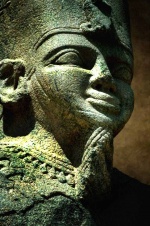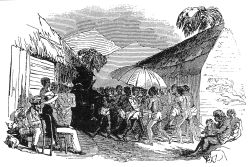Example 2
This example for the use of DPL is based on a copy of articles from the English wikipedia.
If you see articles arranged this way you quickly get an idea of the contents and you may also feel tempted to align structural differences between the articles ...
| Country | Area | Population | #hits |
|---|---|---|---|
| Cameroon
align=right|475,442 |
16,323,000 | %COUNT% | |
| Nigeria
align=right|923,768 |
133,530,0001 | %COUNT% | |
| Somalia
align=right|637,657 |
8,228,000 | %COUNT% | |
| Sudan
align=right|2,505,813 |
36,992,490 | %COUNT% |
Note that the country names in the small table link to the corresponding entry in the big table.
| Country | History | Culture | Area & Population |
|---|---|---|---|
CameroonPre-colonial periodArchaeological finds show that humankind has inhabited Cameroonian territory since the Neolithic. The longest continuous inhabitants are probably the ..→ |
..→
| ||
NigeriaMore than 2,000 years ago. the Nok people in central Nigeria were producing sculptures. In the northern part of the country Kano and Katsina has recorded history which dates ..→ |
| ||
SomaliaPre-colonial timesSomalia has been continuously inhabited by numerous and varied ethnic groups, some of Italian or Yemenite ancestry, but the majority are Somalis, for the last 2,500 years. In late antiquity, the northern part of Somali (Somaliland) was part of the Kingdom of Aksum from about the 3rd century to the 7th. ..→ |
| ||
Sudan Statue of a Nubian king, Sudan. Early history of SudanThree ancient kings of the Kushite kingdoms existed consecutively in northern Sudan. This region was also known as Nubia and Meroë, and ..→ |
..→
|
<references/>
